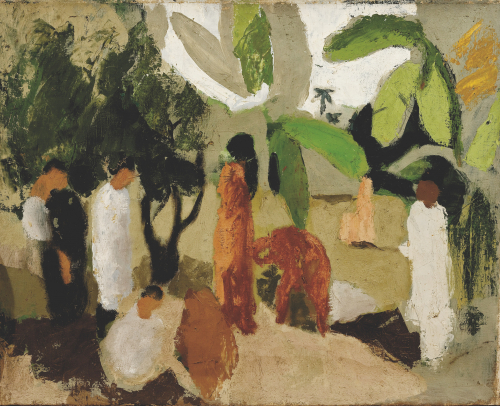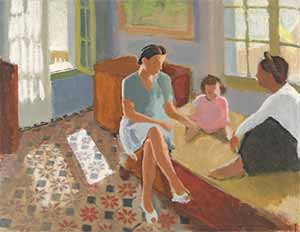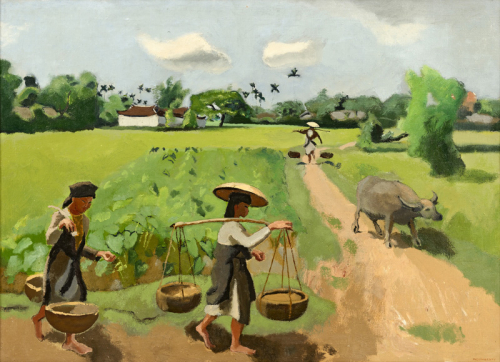
JOSEPH INGUIMBERTY (1896 - 1971)
FROM FRANCE TO INDOCHINA
In 2012, the Galerie Alexis Pentcheff was honoured to present a retrospective of Joseph Inguimberty’s work, sixty years after the only personal exhibition dedicated to him, held in his native city, at Moullot Galerie. This project started with a beautiful encounter, a meeting between the artist’s children and Giulia and Alexis Pentcheff. Under the direction and writing of Giulia Pentcheff, they first released a book on Joseph Inguimberty’s paintings, a reference for all amateurs and collectors, which contributed to fully comprehend the complexities, characteristics and development of his painting throughout his life. Since then, the gallery has been highly implied in Joseph Inguimberty’s representation worldwide and has worked with many collectors and museums in Europe and Asia. It aims to bring both his production in France and in Indochina together, in order to highlight the singularities and significance of his work among 20th-century Western and Asian art.
Born in South of France, Marseille, Joseph Inguimberty arrives in Indochina in the 1920s with a traditional perception of art, acquired through his artistic education. However, the painter demonstrates quickly a profound fascination for those exotic flamboyant landscapes, their unusual flatness and the damp atmosphere. There, Inguimberty approaches his art in a resolutely new way, integrating what he discovers in Asia to his European background. As a teacher, he pushes his students to experiment with diverse techniques, such as lacquer and encourages them to never be content with their achievements. In 1929 Joseph Inguimberty has his first solo exhibition at the Imprimerie d’Extrême d’Orient in Hanoi where the General Government of Indochina purchases several of his paintings. Subsequently, his works will enter the collections of several museums such as Musée des Beaux-Arts de Marseille, Quai Branly, Musée d’Histoire de Marseille and Centre Pompidou.
When Joseph Inguimberty is forced to return to France in 1946 during the Second World War, he is an accomplished painter. Although he produces a new body of work clearly influenced by the region’s landscapes and remarkable light, his experience of Vietnam remains prominently conspicuous in his paintings. In 1952, people from Marseille discover the work of this incredible, yet peculiar painter, at Moullot gallery. Surprised by his poetic take on reality and novel approach, they call him the “Vietnamese Renoir”.


UNLEARNING WESTERN COMPOSITION
«Inguimberty studied the landscape scientifically as he had done in Marseille when he observed the dockers at work, determined to dissect each movement in order to improve his understanding. He tackled it in all its complexity in order to depict it with the greatest simplicity. It was not natural for him to simplify shapes, he had to dismiss a large part of what he was taught. While his Vietnamese students learned to construct space from a Western point of view, he had to unlearn this strict approach. And that was only possible if he pushed his powers of observation to the extreme. The preliminary drawing fades into the final painting because any interest in it has long since disappeared, its impact diminished through the many sketches, sacrificed to the fullness of the composition. Any underlying component of the composition, anything vital to its construction, in other words, the initial stages, disappears behind the effect the pain- ter wishes to obtain. The framework vanishes. He manages to achieve simplicity by taking the slowest, most tortuous path. The essential is said in so little.» Giulia Pentcheff, Joseph Inguimberty, 2012
